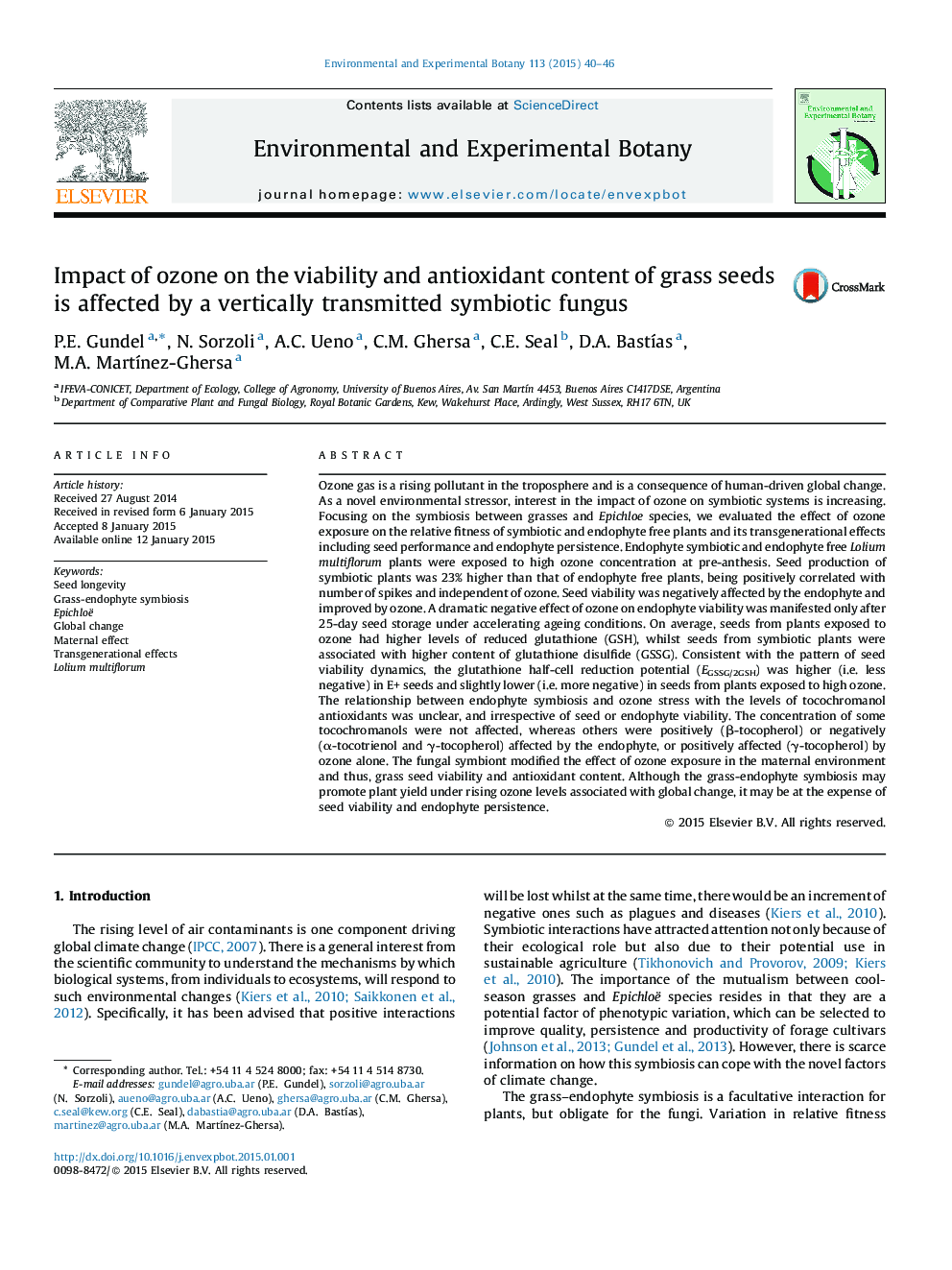| Article ID | Journal | Published Year | Pages | File Type |
|---|---|---|---|---|
| 4554304 | Environmental and Experimental Botany | 2015 | 7 Pages |
•Tropospheric ozone is affecting biological systems including symbiotic interactions.•Vertically transmitted fungal endophytes increased plant yield under ozone.•Ozone promoted antioxidant content and viability of endophyte free seeds.•The endophyte reduced seed viability while ozone reduced endophyte viability.•Epichloë species modified the effect of the maternal environment in host grasses.
Ozone gas is a rising pollutant in the troposphere and is a consequence of human-driven global change. As a novel environmental stressor, interest in the impact of ozone on symbiotic systems is increasing. Focusing on the symbiosis between grasses and Epichloe species, we evaluated the effect of ozone exposure on the relative fitness of symbiotic and endophyte free plants and its transgenerational effects including seed performance and endophyte persistence. Endophyte symbiotic and endophyte free Lolium multiflorum plants were exposed to high ozone concentration at pre-anthesis. Seed production of symbiotic plants was 23% higher than that of endophyte free plants, being positively correlated with number of spikes and independent of ozone. Seed viability was negatively affected by the endophyte and improved by ozone. A dramatic negative effect of ozone on endophyte viability was manifested only after 25-day seed storage under accelerating ageing conditions. On average, seeds from plants exposed to ozone had higher levels of reduced glutathione (GSH), whilst seeds from symbiotic plants were associated with higher content of glutathione disulfide (GSSG). Consistent with the pattern of seed viability dynamics, the glutathione half-cell reduction potential (EGSSG/2GSH) was higher (i.e. less negative) in E+ seeds and slightly lower (i.e. more negative) in seeds from plants exposed to high ozone. The relationship between endophyte symbiosis and ozone stress with the levels of tocochromanol antioxidants was unclear, and irrespective of seed or endophyte viability. The concentration of some tocochromanols were not affected, whereas others were positively (β-tocopherol) or negatively (α-tocotrienol and γ-tocopherol) affected by the endophyte, or positively affected (γ-tocopherol) by ozone alone. The fungal symbiont modified the effect of ozone exposure in the maternal environment and thus, grass seed viability and antioxidant content. Although the grass-endophyte symbiosis may promote plant yield under rising ozone levels associated with global change, it may be at the expense of seed viability and endophyte persistence.
